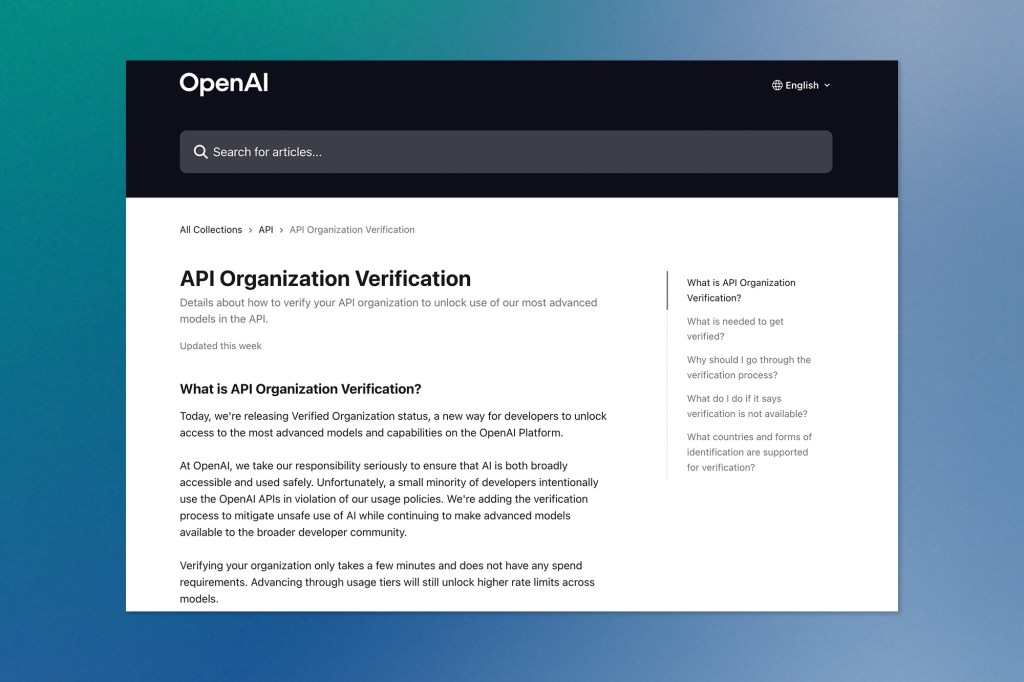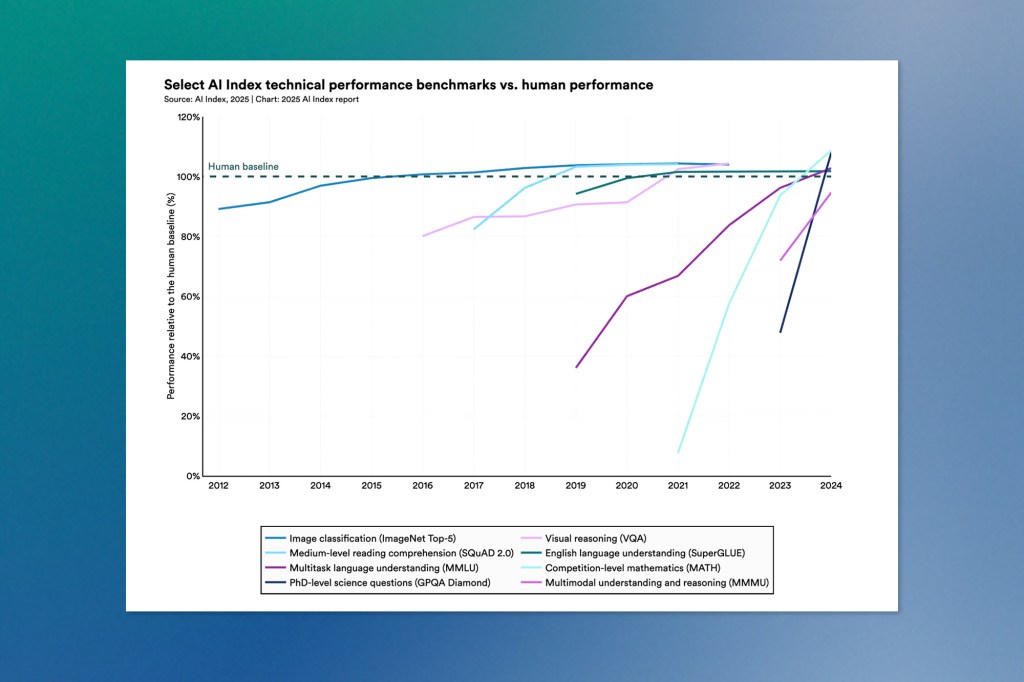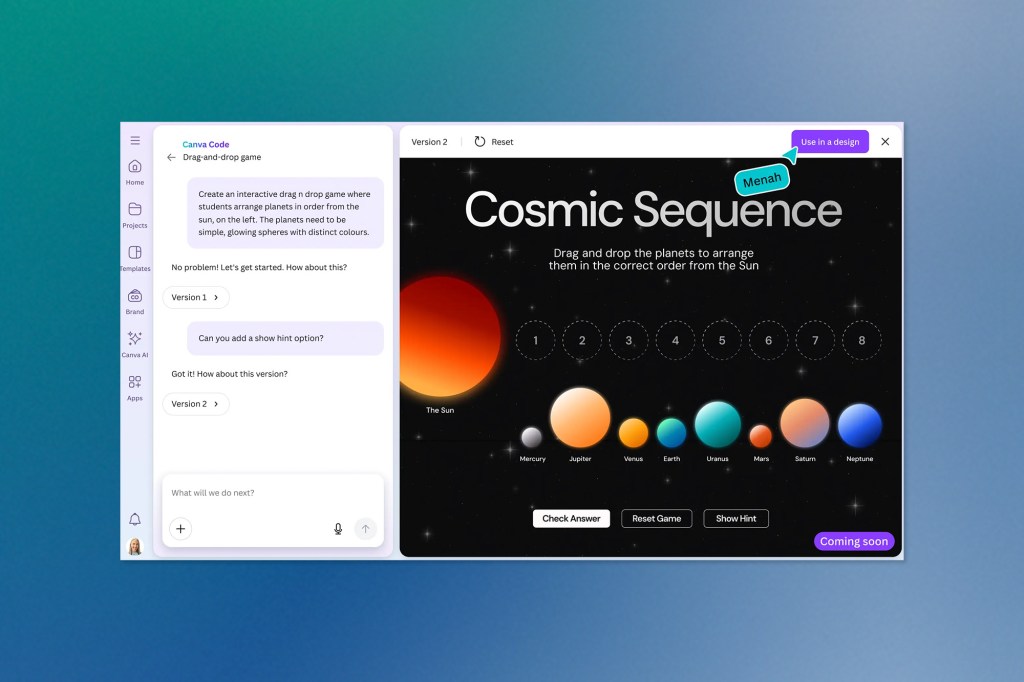Major players are making strategic moves that reshape how we interact with and deploy artificial intelligence. This week’s edition highlights OpenAI’s significant developments, including enhanced memory capabilities for ChatGPT, the retirement of GPT-4, and the launch of three new models: GPT-4.1, GPT-4.1 mini, and GPT-4.1 nano with improved coding capabilities. Meanwhile, YouTube launched its “Music Assistant” tool for creators, Stanford’s HAI Institute revealed dramatic efficiency gains in its AI Index 2025 report, and Canva expanded its AI capabilities with features that further transformed the creative industry.
Listen to AI Knowledge Stream
AI Knowledge Stream is an AI-generated podcast based on our editor team’s “AI This Week” posts. We leverage cutting-edge AI tools, including Google Notebook LM, Descript, and Elevenlabs, to transform written content into an engaging audio experience. While AI-powered, our team oversees the process to ensure quality and accuracy. We value your feedback! Let us know how we can improve to meet your needs better.
Inside OpenAI’s Latest Moves
OpenAI continues to make significant moves in the AI space with several key developments this week:
ID Verification Coming for Advanced Model Access
OpenAI is rolling out “Verified Organization,” a new verification system requiring a government-issued ID to access certain future AI models. This measure appears designed to combat misuse while maintaining broad accessibility. Each ID can only verify one organization every 90 days, and not all organizations will qualify.
The company frames this as a response to the small minority of developers who violate usage policies, positioning it as a security enhancement for increasingly capable models. This may also help prevent IP theft, following reports that OpenAI investigated potential data exfiltration by a group allegedly linked to DeepSeek, a China-based AI lab.

ChatGPT’s Memory Gets a Significant Upgrade
ChatGPT now features enhanced long-term memory capabilities, allowing it to recall details from previous conversations without users explicitly saving them. This feature builds on last year’s more limited Memory advancement with two components: manually saved memories and automatic reference chat history.
The upgrade aligns with CEO Sam Altman’s vision of “AI systems that get to know you over your life.” Currently rolling out to Pro subscribers first ($200/month), with Plus users ($20/month) next in line, followed by Team, Enterprise, and Edu users. The feature remains optional, with privacy controls allowing users to deactivate it entirely or use temporary chats when preferred.
Notably, the feature won’t be available in regions with strict AI regulations, including the EU, the UK, and several European countries.
GPT-4.1 Family Launches with Major Performance Improvements
OpenAI has introduced three new models to its API lineup: GPT-4.1, GPT-4.1 mini, and GPT-4.1 nano. These models outperform their predecessors across key capabilities, with significant improvements in:
– Coding: GPT-4.1 scores 54.6% on SWE-bench Verified, a 21.4% absolute improvement over GPT-4o
– Instruction following: 10.5% absolute increase on Scale’s MultiChallenge benchmark
– Long context handling: All three models support up to 1 million tokens of context, with improved comprehension across the entire context window
– Knowledge cutoff: Refreshed to June 2024
The new models offer better performance at lower costs, with GPT-4.1 being 26% less expensive than GPT-4o for median queries. GPT-4.1 mini matches or exceeds GPT-4o in intelligence evaluations while reducing latency by nearly half and cutting costs by 83%. Meanwhile, GPT-4.1 nano, OpenAI’s fastest and cheapest model, delivers strong performance for tasks requiring low latency.
OpenAI has announced the deprecation of GPT-4.5 Preview, with the model being turned off on July 14, 2025. The company notes that while GPT-4.5 was introduced as a research preview to experiment with a large compute-intensive model, the lessons learned will be incorporated into future API models.
GPT-4 Retirement Announced
OpenAI will fully replace GPT-4 with GPT-4o in ChatGPT effective April 30, though the older model will remain available via API. The company cites GPT-4o’s superior performance in writing, coding, STEM, and other areas as the reason for the transition.
GPT-4, which reportedly cost over $100 million to train, was groundbreaking when released in March 2023, particularly for introducing multimodal capabilities to OpenAI’s mainstream offerings.
YouTube Launches AI-Powered “Music Assistant” for Creators
YouTube is rolling out a new AI tool called “Music Assistant” that generates copyright-free instrumental tracks for video creators. This feature aims to solve a persistent problem for content creators: finding suitable background music without risking copyright claims.
The new tool appears as a tab within YouTube’s Creator Music beta section. Users can generate custom tracks by entering descriptive prompts such as “uplifting and motivational music for a workout montage.” The system then produces several options that creators can preview and download directly for use in their video projects.
According to a demonstration on YouTube’s Creator Insider channel, Music Assistant is gradually being introduced to users with access to the Creator Music beta program.
![Screenshot of YouTube Studio’s new AI-powered “Music Assistant” under the Creator Music [Beta] tab. The interface allows users to generate background music by entering prompts, with suggestions like “uplifting music for a workout montage” or “calm and peaceful music with acoustic guitar.”](https://trewknowledge.com/wp-content/uploads/2025/04/AI-This-Week_Youtube-Creator-Music.jpg?w=1024)
This tool joins a growing ecosystem of AI music generation services. Other players in this space include Stability AI’s diffusion model for background audio creation and Meta’s open-source AudioCraft and MusicGen systems that can create sounds and media through text prompts.
The Music Assistant isn’t YouTube’s first venture into AI-powered music creation. The platform previously developed a music remixer for “restyling” popular songs for Shorts content and the Dream Track feature (powered by Google DeepMind’s Lyria) that converts hummed melodies into tracks styled after participating artists like T-Pain.
AI Index 2025 Reveals Dramatic Industry Evolution
Stanford’s Human-Centered Artificial Intelligence (HAI) Institute has released its annual AI Index Report for 2025, highlighting significant shifts in the AI landscape across technical capabilities, investment patterns, and regulatory approaches.
Among the most striking findings is the dramatic improvement in smaller language models. The report notes that while achieving over 60% accuracy on the MMLU benchmark required a 540-billion-parameter model (PaLM) in 2022, Microsoft’s Phi-3-mini accomplished the same with just 3.8 billion parameters by 2024 – representing a 142-fold reduction in model size over two years.
Cost efficiency has seen similarly impressive gains. The expense of querying an AI model with GPT-3.5-equivalent performance (64.8% MMLU accuracy) plummeted from $20 per million tokens in November 2022 to merely $0.07 per million tokens by October 2024 with Gemini-1.5-Flash-8B – a 280-fold reduction in approximately 18 months.

While the United States maintains leadership in producing top AI models (40 notable models in 2024 compared to China’s 15), the performance gap is narrowing rapidly. Chinese models have achieved near parity on major benchmarks like MMLU and HumanEval, erasing what were double-digit differences just a year earlier. China continues to lead in AI publications and patents.
The report also documents concerning trends in AI misuse. The AI Incidents Database recorded 233 AI-related harmful incidents in 2024 – a record high representing a 56.4% increase over 2023. These incidents included deepfake intimate images and the alleged involvement of chatbots in a teenager’s suicide.
On the investment front, the U.S. has widened its already substantial lead, with private AI investment reaching $109 billion in 2024 – nearly 12 times China’s $9.3 billion and 24 times the UK’s $4.5 billion. This disparity is even more pronounced in generative AI specifically.
Corporate adoption continues to accelerate, with 78% of surveyed organizations reporting AI use in 2024, up from 55% in 2023. The percentage of respondents using generative AI in at least one business function more than doubled from 33% to 71% during the same period.
The regulatory landscape shows increasing action at the state level in the U.S., with AI-related laws jumping from 49 in 2023 to 131 in 2024, while federal legislation lags behind. The report also reveals significant regional differences in AI perception, with much higher optimism in Asian countries (China 83%, Indonesia 80%, Thailand 77%) compared to Western nations (U.S. 39%, Canada 40%, Netherlands 36%).
Canva Expands AI Capabilities Amid Creative Industry Transformation
Design platform Canva is significantly expanding its AI capabilities with a suite of new features that further blur the lines between human and machine-generated creative work. The Australian company announced a comprehensive AI integration that touches nearly every aspect of its platform.
At the center of this expansion is Canva AI, an assistant capable of generating images from text prompts, suggesting design ideas for social media and print materials, writing copy, and creating documents. This positions Canva to compete more directly with generative AI platforms while maintaining its core design functionality.
Perhaps most notably, Canva has introduced “Canva Code,” a feature developed in partnership with Anthropic that allows users to create interactive applications through simple prompts. These mini-apps, which might include interactive maps or custom calculators, can be seamlessly integrated into designs. According to Cameron Adams, Canvas co-founder and chief product officer, this feature grew from observing internal teams using AI for prototyping.
While several startups like Cursor, Lovable, and Replit have already established themselves in the AI-assisted coding space, Canva’s integration of this capability directly into its design platform represents a strategic enhancement of its value proposition.

The company is also strengthening its photo editing capabilities with new AI tools allowing point-and-click image element modification and an intelligent background generator that accounts for lighting and layout. These additions appear aimed at competing with professional editing tools like Adobe Photoshop and Lightroom.
For enterprise customers, Canva is launching “Canva Sheets,” a spreadsheet tool with AI-powered features like “Magic Insights” for automated data analysis and “Magic Charts” for instant visualization of data with brand-specific graphics. The spreadsheet tool integrates with HubSpot, Statista, Google Analytics, and other platforms for streamlined data import.
This AI push comes despite ongoing tensions in the creative community regarding AI’s impact on artistic professions. Many artists have expressed concerns about their work being used without permission to train AI models and fears about AI potentially displacing creative jobs.
Adams, however, frames this as an evolution rather than a conflict, suggesting that “all our jobs will change as AI comes” across every specialty from design to engineering, marketing, and sales. He views this transition as “a massive opportunity” rather than a threat.
These developments follow reports that Canva’s leadership had previously encouraged employees to use AI tools wherever possible, and the company recently laid off technical writing staff. While Adams stated these layoffs were related to restructuring rather than AI implementation, they highlight the complex workforce dynamics as AI capabilities expand in creative industries.
Keep ahead of the curve – join our community today!
Follow us for the latest discoveries, innovations, and discussions that shape the world of artificial intelligence.


